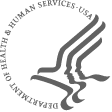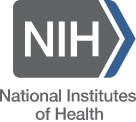Fellowships: Biophysical, Physiological, Pharmacological and Bioengineering Neuroscience – F03B
Areas of interest encompassed by this study section include the basic structural and functional studies of physiology of neurons, glial, retinal, and other excitable cells, including the structural and functional characteristics of ion channels and transporters Applications with projects investigating basic cellular regulation/physiology, neurochemical and pharmacological mechanisms, including the actions of psychoactive drugs upon channel function are reviewed in this panel. The development of therapeutic compounds including discovery, drug development and toxicology. Finally, all applications involving bioengineering nervous system devices including the development and integration of neuroprosthetic devices are reviewed in F03B.
The List of Reviewers lists all present, whether standing members or temporary, to provide the full scope of expertise present on that date. Lists are posted 30 days before the meeting and are tentative, pending any last minute changes.
Review Dates
Topics
- Structural and functional studies of basic cellular and molecular physiology of neural and other excitable cells; ion channels, transporters and synaptic physiology.
- Drug abuse: molecular neuropharmacology, and pharmacodynamics.
- Molecule specific imaging of neuronal proteins, neurotransmitters, neuropeptides, and lipid distribution; optical imaging in neuroscience.
- Structure-activity relationship of neuronal proteins and lipids; proteomics; neuronal protein engineering.
- Neurotransmitter synthesis and release, electro-chemical methods to study neurotransmitter clearance.
- Technology development for treatments of brain injury and diseases including neuroprotection, immuno-therapeutics, cell transplantation, nanotechnology and deep brain stimulation
- Novel neuromodulation approaches for stabilizing cognition, memory, Alzheimer’s Disease, dementia, and major depression. These include various TMS modalities, Transcranial direct current stimulation (tDCS), Optogenetics, and ultrasound, as well as by obtained EEG information.
- Development and validation of combination imaging modalities including MRI, fMRI, PET for brain mapping/pre-surgical brain mapping.
- Creating or improving current computational and mathematical models based on TMS, tDCS as analytical tools for neuroimaging data analytics for improving functional brain atlas.
- Development of optical microscopy and other imaging modalities, such as high/super-resolution, NIRs and adaptive optics, for visualizing brain, eye, neural cells and circuitry utilizing light/optical approaches.
- Neurotherapeutics: small molecule discovery and synthesis, nanomaterials and delivery, nanoparticles, biomaterial development.
- Machine learning, biomedical engineering, brain-computer interface, neural engineering, computational modeling and neuronal/network modeling.
- Mechanism underlying basic visual anatomy and functions, as well as developmental and degenerative diseases of the visual system (retinal pathology, glaucoma, macular degeneration, etc.) Studies of anterior eye diseases.

